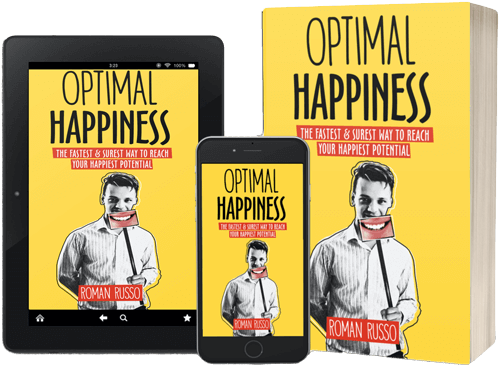
The five major chemicals of happiness are dopamine, endorphin, oxytocin, serotonin, and cortisol. They each impact our happiness in different ways, yet in order to truly comprehend why we experience happiness and how to maximize it, we must first grasp the individual roles of these chemicals.
Interestingly, many authors discuss the 4 chemicals of happiness, excluding cortisol because they label it the “unhappiness chemical,” which they believe does not belong on the list of happiness chemicals. However, since cortisol directly influences our well-being, I chose to include it in this compilation. After all, we are encouraged to increase dopamine, endorphin, oxytocin, and serotonin levels, so why not aim to minimize cortisol levels as well?
In summary, here are the five happiness chemicals and why they are crucial for our overall happiness and well-being:
Front-End vs Back-End of Happiness
In IT (information technologies), the front-end refers to the interface of a website (or any other software) while the back-end refers to what happens behind the scenes which makes this interface work in the first place.
In terms of happiness, the five chemicals of happiness are the back-end of our experience in life, which dictate how we feel. Respectfully, the front-end of happiness is how we lead our lives, what happens in our surroundings, and how it affects our well-being.
In other words, what we do matters and biology alone does not predict our happiness, as one popular happiness myth states. Of course, what we want to do is dictated by our biology, which creates a map of actions of sorts, which we want to understand and follow in order to maximize our positive emotions. This is where the 5 chemicals of happiness come in.

1. Dopamine: How it Affects Our Happiness
Dopamine plays a role as a rewards system in our brain. As such, if we do something which our mind likes, we receive a surge of dopamine, with the purpose of making us remember that this specific action was good for us and therefore we should do it more.
However, while dopamine is naturally designed to make our lives better and happier, by rewarding us for the actions we should be doing more, modern day companies learned how to use dopamine against our best interest.
For example, much of the fast food industry uses excessive amounts of sugar, salt, and processed fats, which our bodies naturally crave. However, these corporations use these ingredients in excess, often stripping them of any nutritious value, which becomes detrimental to our health in the process.
2. Endorphin: How it Affects Our Happiness
Endorphin can be best described in terms of being a natural painkiller. One of the most common places we release endorphins is during physical activity, such as when we are going for a run.
At this moment, muscles are pushed towards their limits, which without endorphins would cause us pain. However, as most runners will attest, they feel good while they are exercising, all thanks to this chemical of happiness.
Of course, after endorphin leaves our system, we can start feeling muscle pain, but most people would state that it is a positive pain, which will result in our physical growth and development.

3. Oxytocin: How it Affects Our Happiness
Oxytocin is a happiness chemical responsible for social bonding and liking other people. As such, any positive interactions with other people cause a surge of oxytocin, making us want to spend more time with these people.
Similarly, oxytocin is also released when we interact with animals, such as pets, which is one reason cat and dog owners report a higher personal well-being.
4. Serotonin: How it Affects Our Happiness
Serotonin seems to be one of the most elusive chemicals of happiness, as it seems to be “involved in everything but responsible for nothing,” as researchers who study this chemical state.
Serotonin is primarily produced in our gut and it regulates our sleep, appetite, digestion, and brain performance. Too little serotonin can lead to mood swings, anxiety, and depression.
As such, serotonin is mostly produced when a person feels good about their life, such as when they are safe, well fed, and surrounded by friends and family. In other words, happiness and serotonin go hand in hand, which is why we are either recommended to lead an overall positive lifestyle or supplement our diet with prebiotic foods (e.g., fruit, berries, and legumes) and foods that are rich in tryptophan (e.g., sunflower seeds, oats, and spirulina). In extreme moments filled with negative emotions, antidepressants, like Prozac, are often prescribed to the people in need, which raise serotonin levels in users’ brains.
Overall, happy, healthy, and stress-free lifestyles lead to more serotonin, which leads to more happiness, creating a virtuous cycle of happiness.

5. Cortisol: How it Affects Our Happiness
Lastly, cortisol is produced when we feel bad, which makes us want to address these negative emotions. As such, cortisol tells us to take action. Failure to do so will result in even more negativity, which is why cortisol is so important for our happiness and well-being.
Certainly, cortisol makes us feel unhappy, which is why some people chose to separate it from other happiness chemicals. However, we need to understand that positivity and negativity are often seen as fabricated concepts, both designed to make us act in a certain way. Sure, cortisol makes us feel bad, but if we didn’t feel bad, we would not address the sources of negativity, which is why positive and negative emotions are often seen as a compass towards what ideally we should be doing in life.
Certainly, there are more than enough instances where people allow negative emotions to persist, or they simply don’t know how to deal with their negative emotions, which is why I wrote my book and lead this blog in the first place. This is also why I am also so passionate about teaching people to achieve their happiest potential, because if people are happy, they are on the right side of life, in addition to feeling good, which is just a nice bonus.
How to Make the Most of the Big 5 Happiness Chemicals
For better or for worse, our happiness is guided by the aforementioned 5 chemicals of happiness. On the positive side, by knowing how our minds and bodies work, we can learn to maximize our sense of well-being. On the negative side, the programming provided by these chemicals may not best be suited for the modern day world.
This is to say that human beings were never designed to live in the modern metropolitans of the world. Instead, biologically speaking, we are still to this day roaming the plains and savants of the world, which was over 10,000 years ago.
As such, we need to learn how to adopt our slow changing biology to the fast moving environment of the modern world. Certainly, we already did a lot of good in this department, but as mentioned in the example of fast food, we created new challenges we need to overcome as a species (e.g., raising debt, depression, destruction of natural habits, etc.).
Overall, trusting our emotions can get us in trouble, which is why we need to learn to control our emotions and not allow them to control us. This is possible, too, if we follow certain guidelines, in turn reaching our happiest potential, and making the world a better place in the process.
Source: Habits of a Happy Brain: Retrain Your Brain to Boost Your Serotonin, Dopamine, Oxytocin, & Endorphin Levels by Loretta Graziano Breuning PhD. Read more about her work at Inner Mammal Institute.














